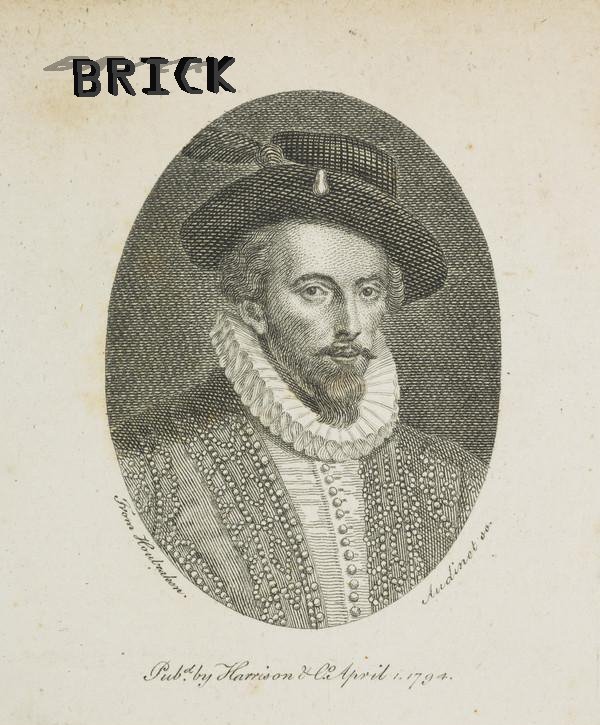The Captivating Life of Sir Walter Raleigh
Who was Sir Walter Raleigh? He was born sometime between 1552 and 1554 into a wealthy English family, and he was the son of a farmer that would make a great deal of money in shipping ventures. Through his father, Raleigh gained an interest in seafaring and also pursued an education.
Early Life
He’d spend time studying at Oxford before leaving to fight at 17 years old for the Protestant army in the Third and Fourth French Wars of Religion. Through five years in France he lived through two major battles including the massacre of St. Bartholomew's Day, where on August 24, 1572 more than 70,000 French protestants were killed. By 1576, he was in London lodging at the Middle Temple where he saw his poems in print.This two year sabbatical ended with the yearning to discover the Northwest Passage. Alongside his half brother, Sir Humphrey Gilbert, Raleigh began the voyage. But this voyage quickly turned into a privateering mission against the Spain when Raleigh hired out his ship to aid in the efforts against the Spaniards. Upon their return to England in 1579, Raleigh and Gilbert faced the dissatisfaction of the Privy Council or advisors of the king. Raleigh's behavior did little to please the council, and he was imprisoned twice in six months for ‘disturbing the peace’. Once out of jail, and at the head of a company of soldiers, he set sail to serve in the Irish wars.
Raleigh's Admirer
Raleigh was a man of Extravagant dress and behavior. A handsome man and superbly self-confident. He was adored by Queen Elizabeth and his opinion on Ireland was accepted by her as she kept him home as an adviser. He received royal favor, entitling him to a house in London as well as two estates in Oxford.Despite the opinion held by many fellow Englishmen that Raleigh was arrogant, he was knighted in 1584.
First Voyage to the Americas
But before, in 1582, Gilbert had organized a company that planned to colonize the Americas with English Catholics. Forbidden by the queen to accompany his half brother, Raleigh invested his own money and a ship of his design in the mission. Gilbert would die on the voyage home from Newfoundland, a region that is now a province of eastern Canada. Raleigh was in turn given a charter (authority from the queen) to "occupy and enjoy" new lands. Raleigh sailed as soon as he received charter, and upon reaching the Carolina shore of America, he claimed the land his own.
Colonization Efforts
Raleigh would try to persuade Elizabeth into a more active role in his colonizing venture, which would settle lands newly discovered in America. She reluctantly gave him a ship and some funds. Raleigh would stay at court where he devoted his energies to financing the operation.The first colonizers were transported by Raleigh’s cousin Richard Grenville, but feuds, a lack of discipline and hostility with Native Americans forced the colonists to return to England with Francis Drake in 1586, bringing with them potatoes and tobacco -- two things foreign in Europe until that time. Raleigh returned the next year with a larger, more diverse population of settlers, including some entire families to again attempt to establish a settlement on Roanoke Island.
The Lost Colony
After a short while in America, John White would return to England to obtain more supplies for the colony, planning to return in a year. But one year would turn to three after a series of delays. Queen Elizabeth ordered all vessels remain at port in order to fight the Spanish Armada, and after the British victory in 1588 permission was granted for the ships to once again set sail. White’s small fleet would set sail for Roanoke, but first he and his crew headed towards Cuba in hopes of pirating treasure-laden Spanish merchant ships. When the supply ships arrived in Roanoke three years later than planned, the settlers had disappeared. The letters CRO and CROATOA carved into nearby trees were the only clues left, suggesting the possibility that the settlers moved to Croatoa Island. A hurricane stopped John White and his crew from reaching the island, the settlers were never found.
Final Efforts
Raleigh would again attempt to send expeditions to America but again the settlements failed, and in 1603, Raleigh’s charter was withdrawn. After James I becomes king, Raleigh would be dismissed from his posts and forced out of his London home. Soon after, he was falsely connected to a plot against the King and sentenced to death. This sentence was later dropped, but he remained in the Tower for thirteen years where he’d attempt to kill himself. James’s eldest son Henry sought council in Raleigh, however, discussing matters such as shipbuilding and naval defense. Raleigh would dedicate writings to the prince, and Henry would champion for Raleigh but died before he could affect his release.
Raleigh's Death
Life upon release from the Tower would last just two short years for Raleigh. Upon release in 1616, he traveled to South America in search of gold, but would only find himself violating the king’s specific instructions to avoid fighting with Spanish colonists in area. Worse, Raleigh’s son, Walter, was killed during the battle with the Spaniards. Raleigh was arrested immediately upon returning to England, and due to his previous criminal history, King James, with the help of Sarmiento, the Spanish ambassador, sentenced him to death. Sir Walter Raleigh was beheaded on October 29th, 1618.

This post is amazing!!!
Thank you!!